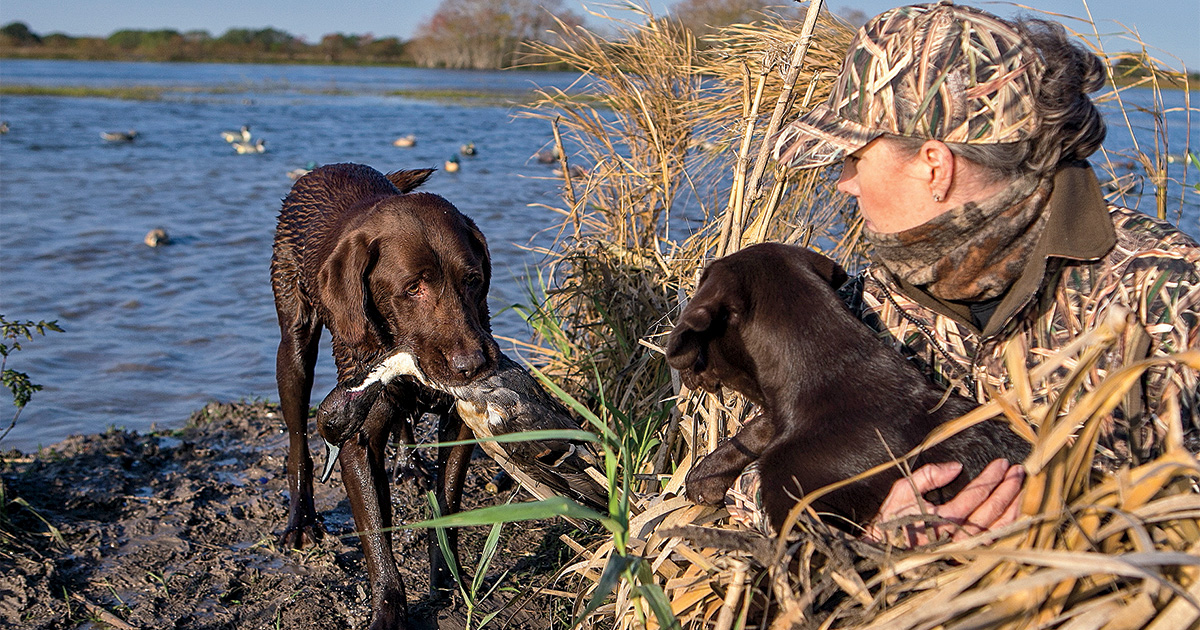Retrievers: The Rookie
Expert advice on when and how to add a retriever to your team
Expert advice on when and how to add a retriever to your team


To make sure that you always have a well-trained retriever to hunt with, your succession plan should include acquiring a new puppy when your current dog is about six years old.
Back in 2005, despite having a record-setting, Hall of Fame–bound signal-caller named Brett Favre, the Green Bay Packers used their first-round draft pick on a quarterback named Aaron Rodgers. In 2008, after riding the pine for three seasons as Favre’s understudy, Rodgers became the starting quarterback, and it all worked out pretty well.
There’s a lesson here for retriever owners: If at all possible, you shouldn’t wait until your retriever is eight, nine, or 10 years old—past his prime, in other words—before bringing a new puppy onto the team. That’s just cutting it too close, and you’re at risk of finding yourself with an old dog who’s no longer capable of being a full-time hunter (or perhaps can’t hunt at all), and a young dog who’s still learning the ropes.
“The average hunting dog owner almost always waits too long to get a ‘replacement’ pup,” says Bob West, the former director of sporting dog programs for Purina and one of the most respected figures in the sporting dog community. “It’s a mistake I’ve seen time and time again. Hunters wait until their dog is nine or 10 years old—at the outer edge of his career as a useful hunter—and they end up behind the eight ball.”
A dog that age is not only more susceptible to illness and injury, West notes, he’s at a place where his overall health, and thus his fitness to hunt, can decline very rapidly. There are exceptions to every rule, but in this game the smart money plays the percentages, not the long shots.
On the other hand, we’ve all seen dogs to whom everything comes so easily and naturally that they’re ready to hunt at a relatively young age. But, again, this is the exception. West says his rule of thumb is that you shouldn’t expect a dog to become a reliable full-time hunter until he’s two-and-a-half to three years old.
Taking all these factors into consideration, West believes that the ideal time to bring a new puppy into the fold is when your current dog is around six years old. That way (if the percentages hold), the younger dog will be ready to assume the lion’s share of the load about the time the older dog is beginning to slow down.
This scenario relies on a number of assumptions, the central one being that your domestic situation allows you to keep two dogs. If not, you might have to struggle through a few transitional seasons, first with an aging veteran, then with a puppy who’s just getting his feet under him.
Still, let’s say that everything lines up just right, and you’re able to bring that seven- or eight-week-old puppy home when your adult dog is five, six, or seven years old. You can’t simply put them together and let the chips fall where they may. There’s too much at stake.
“You need to introduce them in a controlled way,” West emphasizes. “A lot depends on the temperament of the older dog. Some dogs will let a little puppy get away with murder, while others aren’t as tolerant. In any event, you should make sure there’s nothing nearby, like food or a toy, that might trigger a territorial or protective response in the older dog. That pup is at a precarious point in his life. All he’s ever known is his momma and his littermates, and the last thing you want is for him to experience a trauma. It could have a lasting effect at that age, which is why you should always err on the side of caution.”
West recommends letting the pup and the older dog get to know each other in the backyard or some other open space free from potential bones of contention. “Keep an eye on them and be ready to intervene,” he advises. “See how it goes for a few days, and once you’re satisfied that they’re getting along well and that the pup knows his boundaries, you can start to ‘lengthen the leash.’ It’s pretty common-sense stuff, really.”
Ducks Unlimited uses cookies to enhance your browsing experience, optimize site functionality, analyze traffic, and deliver personalized advertising through third parties. By continuing to use this site, you agree to our use of cookies. View Privacy Policy